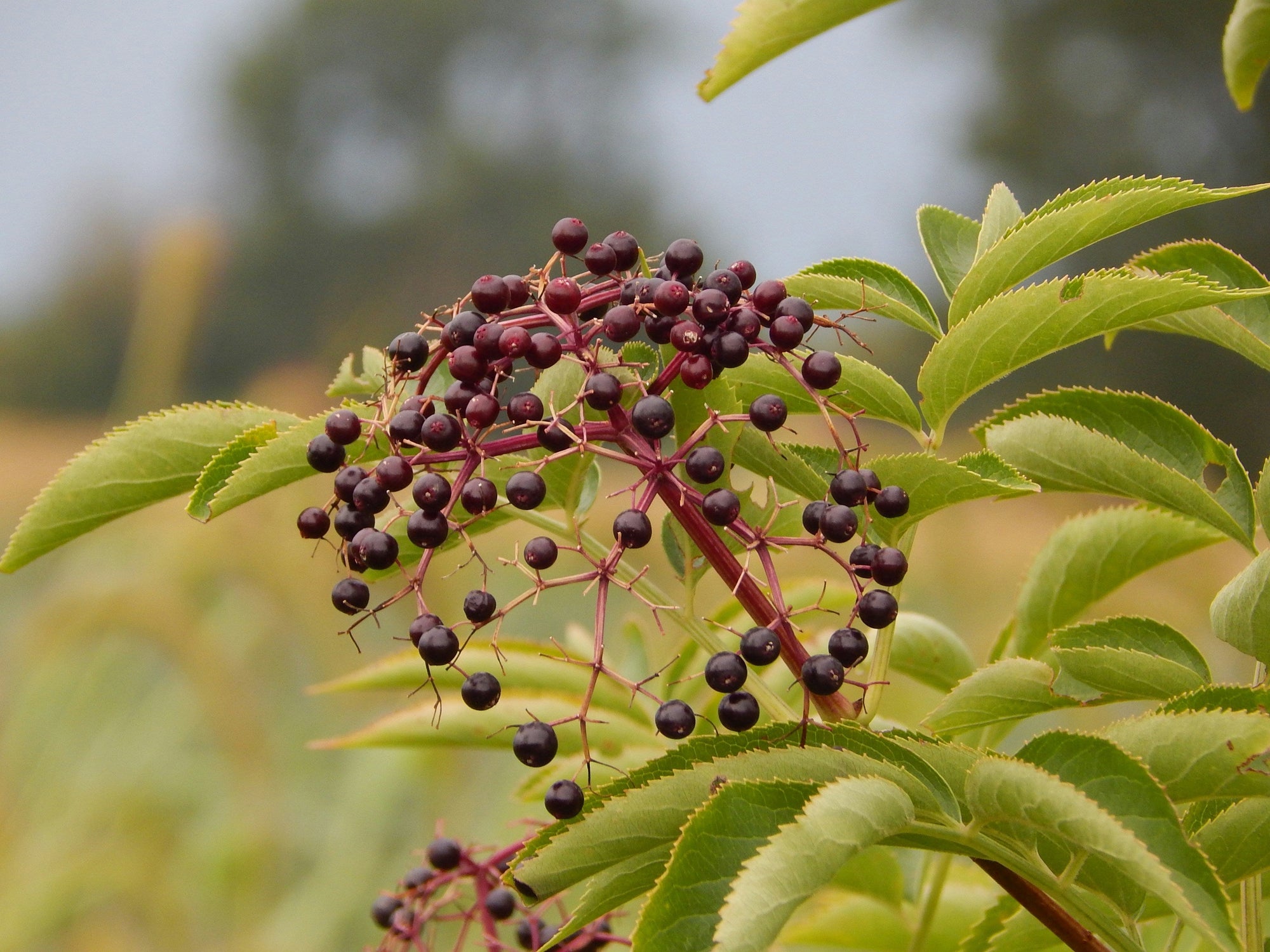

The History of Elderberries: A Timeless Superfood
Elderberries—small, dark purple berries from the elder tree (Sambucus nigra)—have been prized for centuries not just for their flavour, but for their wide array of health benefits. These berries have a fascinating history, deeply intertwined with both ancient cultures and modern herbal medicine. Let’s take a journey through time to explore the rich and varied past of elderberries.
Ancient Beginnings: The Elder Tree and its Sacred Status
The elder tree has a long history dating back thousands of years. Native to Europe, Asia, and parts of North America, elder trees were seen as sacred by many ancient civilisations. In Greek mythology, the elder tree was linked to the goddess of the harvest, Demeter. In fact, the tree’s Latin name, Sambucus, is thought to be derived from the Greek word sambuke, meaning a musical instrument made from elder wood. Elder was seen as both a protective plant and one that could bring good fortune.
In the Celtic tradition, the elder tree was considered a “tree of life” and was thought to possess magical properties. The Druids believed that planting an elder tree near a home would bring good health and ward off evil spirits. It wasn’t just the fruit that was revered; the elder’s leaves, flowers, and bark were also used in various ways, from treating ailments to making potions.
Elderberries in Medieval and Renaissance Times
During the medieval period, elderberries began to be used more extensively in medicine. Monks and herbalists used elderberries in a variety of remedies for coughs, colds, and fevers. The elderflower, in particular, was valued for its ability to treat respiratory issues. Elderberry syrup was even a common treatment for the flu, and its reputation for aiding in recovery during cold and flu season continued through the Renaissance.
The berries were also used to create wines, cordials, and jams, a tradition that continues in many cultures today. Elderberry wine, rich in antioxidants, was considered both a drink for pleasure and a tonic for health. Elderberries were also part of folk medicine in England and other parts of Europe, where they were recommended for a variety of ailments including the common cold, bronchitis, and even as a remedy for the plague.
The Role of Elderberries in Indigenous Cultures
In North America, Indigenous tribes, including the Cherokee and Iroquois, used elderberries for medicinal purposes. They utilised not just the berries, but also the bark and flowers, applying them as poultices, teas, and tinctures. The elderberry was considered an important part of their traditional healing practices.
One of the key medicinal properties of elderberry was its ability to boost the immune system. Indigenous people recognised the powerful antioxidants within elderberries long before modern science confirmed their benefits. This understanding of the elder tree’s healing powers was passed down through generations and remains a part of native herbal practices today.
The Modern Revival: Elderberries in Contemporary Medicine
In recent years, elderberries have seen a resurgence in popularity, particularly in the wellness and natural health communities. Numerous studies have confirmed the long-held beliefs about elderberry’s immune-boosting properties. Rich in vitamins A, C, and E, elderberries are known to support the immune system, fight inflammation, and help reduce symptoms of the flu and common cold. Elderberry syrup has become a popular go-to remedy during flu season, with many people swearing by its effectiveness in shortening the duration and severity of illness.
Additionally, elderberry’s antioxidant-rich properties have made it a favourite ingredient in skincare, particularly for its ability to reduce the appearance of fine lines and wrinkles, and promote a healthy, glowing complexion.
Elderberry in Australia
While elderberries are native to the Northern Hemisphere, they have found their way to Australia, where they thrive in certain regions with temperate climates. Elderberry trees are now grown by gardeners and herbalists across the country, and their berries are used in everything from jams and syrups to teas and tinctures. Australians, known for their interest in native plants and herbal remedies, have embraced elderberries as a natural way to boost immunity and overall wellness.
Many Australians are rediscovering the wonders of elderberries, using them to craft natural remedies that draw from both ancient wisdom and modern science.
Conclusion: A Legacy of Health and Healing
The history of elderberries is one of deep connection to both culture and health. From their revered status in ancient civilisations to their essential role in herbal medicine and modern wellness trends, elderberries have stood the test of time. Today, they continue to be used in everything from remedies for colds to skincare products, proving that sometimes, the best health secrets are the ones passed down through generations.
Whether you’re sipping on elderberry tea, enjoying a spoonful of elderberry syrup, or simply admiring the tree’s beauty, the elderberry has certainly earned its place in both history and the modern health landscape. So next time you see an elderberry product, take a moment to appreciate the centuries of tradition, wisdom, and healing that have made this humble berry a true superfood.
